My brain is behind the times
 Tuesday, March 24, 2009 at 11:53AM
Tuesday, March 24, 2009 at 11:53AM With a new piece of technology comes a new pile of I've-heard-about-this-in-conversation-but-I-really-have-no-idea-what-it-is-or-what-it-does-or-how-to-use-it questions.
I got a new Canon Rebel XSi digital SLR camera for my birthday but I have a serious learning curve ahead of me. I used to shoot 35mm SLR ten years ago and I kinda forget what I'm supposed to do. Yes, I remember f-stop and ISO and all that basic functionality but what about...
1. selecting the f-stop I'd like to use, it's not just a ring on the lens anymore?
2. is it easier to use the camera's presets rather than manually selecting my shot settings?
3. should I always shoot in RAW format?
4. do I edit the RAW images differently?
5. how do I use Adobe Bridge?
6. do I convert the file to a jpg to add it to flickr?
7. what other lenses should I get?
8. is my husband going to return it because I won't stop snapping pictures of him at inopportune times, ie. when he's trying to sleep?
These are my pressing questions. Maybe I'll hunt down answers and post them back on my blog, but if you can direct me to any answers for any of them I'd really appreciate it!

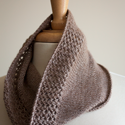 Metalico Cowl {knitting pattern}
Metalico Cowl {knitting pattern}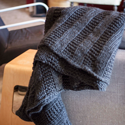 There's A Chill in DeAire {blanket knitting pattern}
There's A Chill in DeAire {blanket knitting pattern}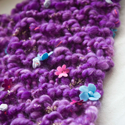 Free: Quirky Quick Knit Scarf Knitting Pattern
Free: Quirky Quick Knit Scarf Knitting Pattern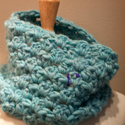 Fandago Cowl {free crochet cowl pattern}
Fandago Cowl {free crochet cowl pattern}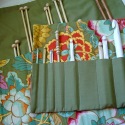
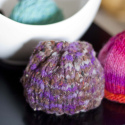
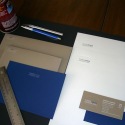


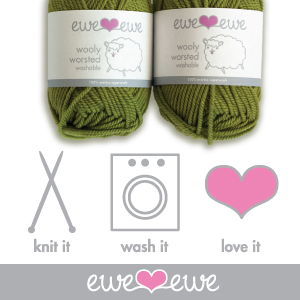






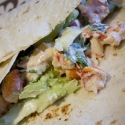
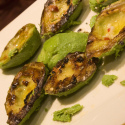



Reader Comments (4)
1. selecting the f-stop I'd like to use, it's not just a ring on the lens anymore?
Nope! it's digital now!
2. is it easier to use the camera's presets rather than manually selecting my shot settings?
I think so. But as you tinker with it more, you'll find that your own settings will be superior to camera's auto mode, for example.
3. should I always shoot in RAW format?
Two schools of thought here. Shoot RAW if you want maximum ability to post-process your images in the future. Disadvantage is the larger file size. If you're starting out, JPEG is fine.
4. do I edit the RAW images differently?
I use Adobe Lightroom to edit RAW images. Definitely worth looking into. Other programs exist, such as Adobe Camera Raw and Apple's Aperture.
5. how do I use Adobe Bridge?
I don't use this program, so no help here.
6. do I convert the file to a jpg to add it to flickr?
Yes, it is easy to do that within Photoshop. I mentioned Lightroom. I import all my RAW images from the CF card to my hard drive, and I post-process the RAW images on the computer. When I want to post an image on a photoblog or flickr, I export the images as JPEGs. Very easy to do in Lightroom. The program also allows you to resize images in many different ways.
7. what other lenses should I get?
This is a tough question. Budget is important. Also: what are you planning on photographing? Landscapes? Portraits? Sports?
Hey Heather - this is a useful website I used to reference when I first got the 30d. http://eosrebels.com/
As for your questions:
1. selecting the f-stop I'd like to use, it's not just a ring on the lens anymore?
Assuming it's the same as the 30d & 5d, you use the large wheel on the back on the camera to select the f-stop
2. is it easier to use the camera's presets rather than manually selecting my shot settings?
I always shoot in manual, but using aperture priority or shutter priority are good options too depending on what you're shooting. You can use the exposure meter as a guide (along with the histogram on the lcd) but keep in mind that with most canons you want to expose +1/3-2/3 to get proper exposure.
3. should I always shoot in RAW format?
I do for maximum post processing ability, but if you're just shooting snapshots that you don't want to edit, then jpg is fine too.
4. do I edit the RAW images differently?
yes and no. You'll be able to adjust the exposure & white balance in the RAW images which can help alot although keep in mind that changing them too much can introduce digital noise.
5. how do I use Adobe Bridge?
It's a pretty simple program to use when used in combination with Adobe Camera Raw... you can batch edit with bridge & ACR which helps get uniformity across images. If you have questions, I can help! :)
7. what other lenses should I get?
There are lots of good lenses out there. For an inexpensive, but great value for money, lens I'd recommend the 50mm 1.8 (although if you spend a little more you can get the 1.4). It's a great indoors lens and usually will be a pretty sharp lens (plus you can use it as a macro by reverse mounting it). Outside of that, it depends on what you want to shoot. I also recommend the 100mm f2.8
#8- Yes, so 1-7 may shortly be irrelevant :)
Most commenters have offered the advice I would have offered so I'll chime in on question #5 with my reasons for loving bridge:
*batch editing made quick and easy! Especially great if you are doing product shots or anything in a uniform lighting situation.
*similar to my first point...batch cropping! My world was rocked when I discovered I could select all my photos and crop them, but afterward still select each photo individually and adjust the position. The crop isn't finalized until you save it so it's easy to double check things quickly. Again, indispensable for product shots or anything where you need 1 gajillion pics the same size. I mean, it's not like opening a photo and cropping takes that long...but imagine doing 30 photos at a time. Genius!
*Speed in editing, and ease of removal or edits. Unlike editing jpg's in photoshop (open a layer for each adjustment, save original and edited photo with layers etc), edit RAW in bridge can be done quickly with all the slider bars, and easily reversed. I found adjusting color/exposure in Bridge to be more fine tuned than in Photoshop.
I currently don't have Bridge but when I did I used it on a daily basis and I feel sad every time I slowly make simple corrections to multiple photos in photoshop. Bridge can't do everything so no retouching under eyes and adding flowers to people's heads. However, for most photos the tools in Bridge are time saving and sufficient.